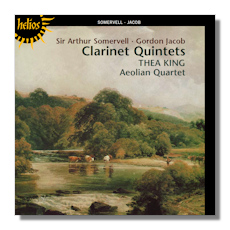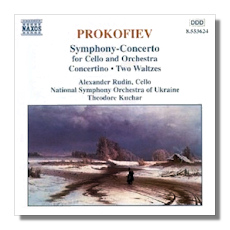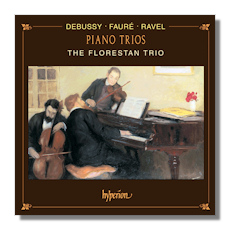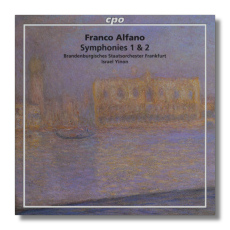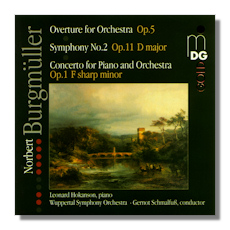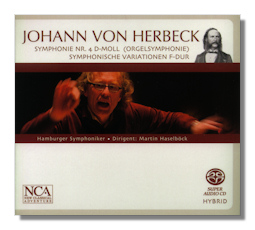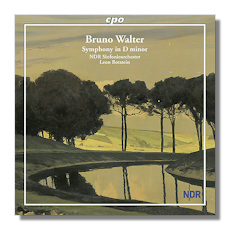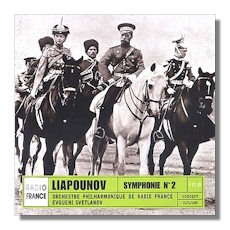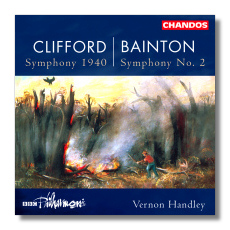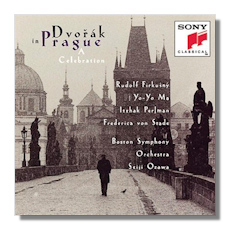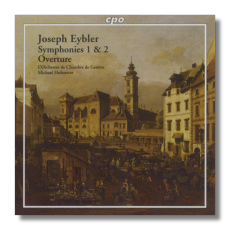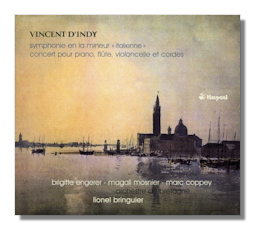
Vincent d'Indy
(1851-1931)
Symphony #1 "Italian" in A Major (1870-72)
Concerto in E Flat Major for Piano, Flute, Cello & Strings, Op. 89 (1926)
Brigitte Engerer, piano
Magali Mosnier, flute
Marc Coppey, cello
Orchestre de Bretagne/Lionel Bringuier
Timpani 1C1125 63:44
These works, the first and last orchestral works d'Indy wrote, are in different ways, hommages. Although his main musical sympathies lay elsewhere, a sojourn in Italy inspired the young composer to write a Symphonie italienne using Rome, Florence, Venice and Naples as the basis for the four movements in which the influence and model of Mendelssohn's Italian symphony are inescapable. At one point, I'm reminded incongruously of Randall Thompson's third symphony!
The concerto at first evokes J.S. Bach and eventually becomes a sort of neo-classical concerto grosso. This rarely-recorded music helps to round out our knowledge of the composer who to many would perhaps be known only by his Symphony on a French Mountain Air (Symphonie sur un chant montagnard français).















